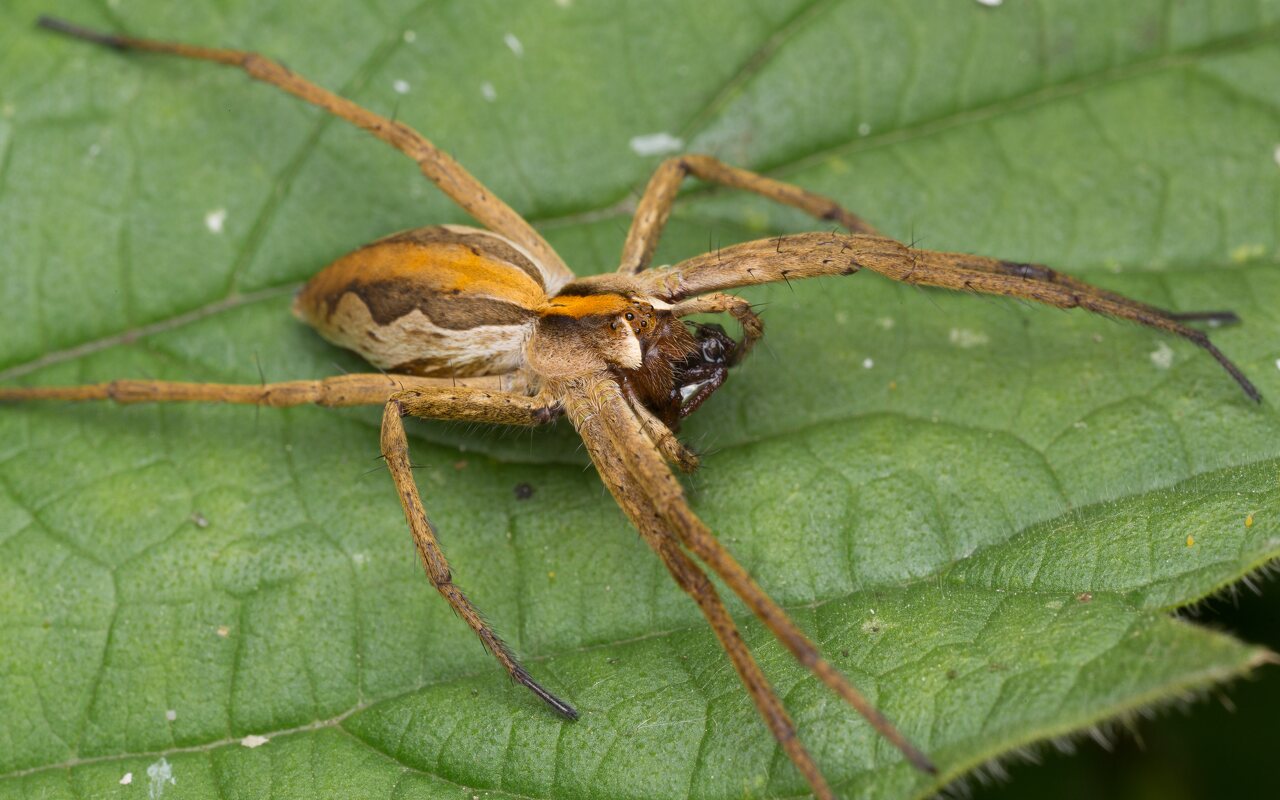
Pisaura mirabilis · paprastasis guolininkas
- nursery web spider
- Listspinne, Raubspinne, Brautgeschenkspinne
- paprastasis guolininkas
- darownik przedziwny
- presentspindel
Pisaura mirabilis has a Palearctic distribution, and can be found all over Europe, the Asian part of Russia, China and North Africa. It lives in all habitats, but prefers wet environments, such as wet meadows, lowland moors, salt marshes, dunes, the edge of forests, and wet hedges. It inhabits all strata, from the ground to the top of trees, but are not found under rocks or in caves. Males of this species offer food gifts to potential female mates.
Nursery web spiders have a one-year annual cycle in southern Europe. They grow in summer, hibernate in winter, reach adulthood in spring, and reproduce and then die in autumn. Their offspring are sexually mature in the following spring. Spiders from the north have a two-year cycle, having to go through two hibernations before reaching sexual maturity.
P. mirabilis has long legs (the fourth pair being the longest). The male is 10‒13 mm, female 12‒15 mm. The prosoma (cephalothorax) is variable in color, ranging from light to reddish brown and from gray to black. A lighter stripe is visible down the middle of the prosoma. The opisthosoma (abdomen) is long and narrow and tapered towards the rear end.
Patelė 12-15 mm, patinėlis – 10-13 mm. Vorų pilvelis šviesiai rudas, su tamsesne zigzagine juosta. Gaudomojo tinklo nerezga. Įdomi šio voro kopuliacija: patinėlis prieš poravimąsi sugauna ir atneša patelei apraizgytą grobį. Kol ši maitinasi, patinėlis ją apvaisina. Šios rūšies atstovai labai ėdrūs, pasižymi kanibalizmu – užpuola savo rūšies atstovus. Neretai patinėliai tampa patelių aukomis.
Kiaušinėlių kokonas melsvai žalias, apipintas iš vidaus vienodo storumo plonais gelsvais siūlais ir iš išorės homogeninio apvalkalo, su 100-300 kiaušinėlių. Patelė kokoną nešiojasi, o prieš išsiritant jaunikliams, tarp apraizgytų žolių stiebelių įrengia varpelio pavidalo lizdą, kuriame vėliau laikosi išsiritę jaunikliai. Lizdo viduryje ji patalpina kokoną ir jį saugo. Kokoną niekada nepalieka, nors ir yra labai baikšti.
Dažnai randamas atvirose vietose, pievose ir miško pakraščiuose, ant žolių ir krūmų. Šviečiant saulei, daug jų būna ant lapų, ištiestomis į priekį ir į užpakalį kojomis. Dažna rūšis.
‥
0 comments
Add a comment